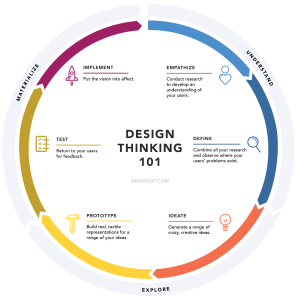Product Design from a Mechanical Engineering Perspective
Learning Objectives
This first part summarizes the overall perspective and steps for product design and manufacturing. By the end of this part readers shown be able to:
- Describe the systematic design process.
- Understand and explain what drives the design decision-making process.
- Describe how design problems differ from other types of engineering analysis tasks.
Introduction
One of the most distinctive features of human beings is their ability to create and transform the world around them. From the earliest tools and artworks to the most advanced technologies and innovations, humans have always been driven by a desire to make things that serve their needs, express their ideas, and shape their environment. This creative impulse is part of human nature, and it reflects our innate curiosity, intelligence, and imagination. Making things is not only a practical activity, but also a way of exploring our identity, culture, and values.
So why are you here? What is the point of taking a course and learning about an activity you have already been doing most of your life from building with Legos to organizing and making your family dinner? Yes, as humans, we are makers. But as designers, we are makers who make things well… at least… when it works out. As we will see, that is not always the case.
Designing is an innate ability that humans possess, as we constantly create and improve our surroundings to suit our needs and desires. However, this does not mean that we can design anything without guidance or knowledge. Taking a course and learning about product design can help us develop our skills, understand the principles and methods of design, and apply them to various contexts and domains. Product design is not just about making things look good or function well, but also about solving problems, meeting user needs, and creating value for society. By learning from experts and peers, we can gain insights, feedback, and inspiration that can enhance our design process and outcomes.
As engineers, we have a specific perspective on the phenomena of designing that we will discuss in detail. But it is important to understand that, for engineers, designing is more than making. Engineers are sworn to a code of ethics, among which is usually that we use our knowledge and skill for the betterment of humanity. Therefore, we are bound by our honor to ensure we are using the best of our knowledge and skills to design products and systems that benefit humanity.
The term design can be understood as both a noun and a verb. As a noun, design refers to the outcome of a creative process, such as a product, a service, or a system. From the object perspective, the term design implies more than the physical object. This noun sense also conveys the information content represented by the object. Consider a key for a door lock. The design of the key includes a specific shape and material. The shape contains information about the lock (the position the tumblers need to engage the locking mechanism) and the material represents information about how the designers expected the key to be used. One aspect of Design Thinking is understanding that every made product or system can be understood as the summation of all the decisions that lead to it. A designer is responsible for making many of those decisions.
The act of making those decisions is the activity or verb form of the term design. As a verb, design refers to the activity of creating something, that is, a way of thinking. Most of the study of design in this text is focused on this activity perspective. We will focus on tools, methods, and best practices to help designers make decisions or, in other words, to design. Finally, design as a verb can also be a way of thinking and problem-solving that involves empathy, creativity, and iteration. This is broadly referred to as Design Thinking.
 https://media.nngroup.com/media/editor/2016/07/29/designthinking_illustration_final-01-01.png
https://media.nngroup.com/media/editor/2016/07/29/designthinking_illustration_final-01-01.png
This is both a noun and verb. The noun version means the artifacts, prototypes, documents, and models of product. The verb version is act of decision-making leading to the development of a product.
Design thinking is a process of using creative skills to solve problems that are ill-defined or unknown. It is a solution-based and user-centric approach that involves understanding users, challenging assumptions, redefining problems, and creating innovative solutions to prototype and test.

